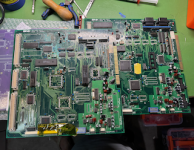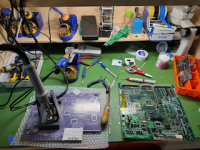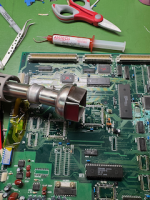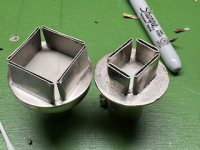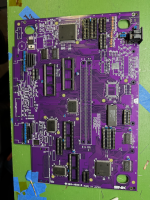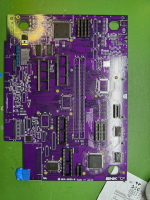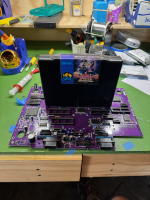Making replacement NEO-G0 chips
These are required for the AES and the only viable donors are another AES or an MVS 2-slot.
Being the absolute legend Furrtek has released the design files here
https://github.com/neogeodev/NeoChips
Furrtek sells a vastly superior version to the one I've made for only eight dollars. Like most things Furrtek makes I cant figure out how they can possibly be this cheap.
https://www.tindie.com/products/furrtek/neo-g0-replacement/
Have been wanting to mess around with flex PCB's for a while now, so I ordered some for the NEO-G0 replacement chips - they arrived today.
This was mainly for fun and experiments - Simple Flex PCB's have the advantage of being nearly free from JLCPCB at the moment, and the edges which are extremely expensive castellations on FR4 are free on Flex.
Substrate is polyamide (mine was .1mm). Copper layer is as expected but thinner. Solder mask layer is some kind of kind of tough coating, I dont think its polyamide because its clear, and not as heat resistant. The silkscreen on Flex looks noticeably worse than the silkscreen on FR4 - im guessing ink doesn't adhere well to whatever the mask layer is made of
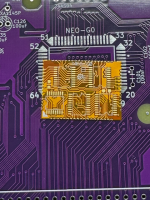
JLCPCB will also allow you to add a "stiffener" layer which I think goes between the copper layer and the mask layer. Unfortunately the Gerber spec doesn't have a stiffener layer built in. So for now you can draw it in one of the unused layers make a note in your order. I didn't do that but I'll give it a go next time.
The boards have clearly been designed for reflow rather than hand soldering (there is absolutely no overlap on the pads). But with a proper micro iron (mine is a Hakko 2032) they were OK to work with. Apparently it is possible to put Flex PCB's through a reflow oven, so hot air rework must also be possible.
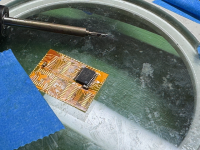
What worked for me was adding flux, carefully tinning the pads, adding more flux, placing the part, tinning the tip of the iron then touching each pin very briefly.
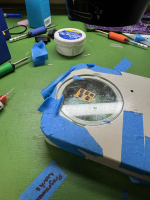
Actually soldering this "chip" to the board
will be terribly difficult - there is a massive thermal differential between the (tiny) flex board edge castellations, and the ginormous motherboard pads. Hold my beer

